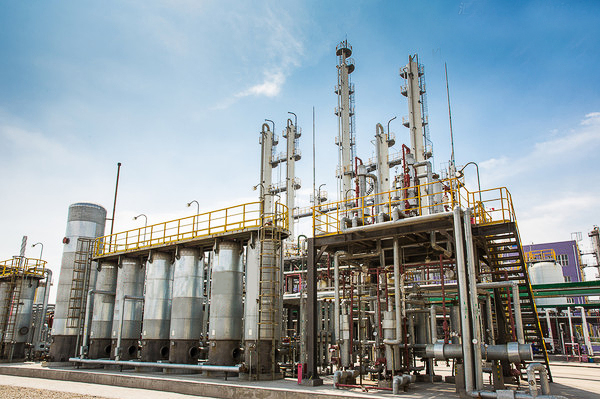 2018-02-01
2018-02-01  1894
1894
Coking is the process of dry carbonization of coal under low oxygen conditions. Many volatile components escape during this process, forming coke oven gas and tar. Coke is the main product of coking. During the coking process, a large amount of atmospheric pollutants such as hydrocarbons, sulfides, cyanide, ammonia and dust are often discharged. Therefore, coking production is one of the largest sources of smoke generation in iron and steel conglomerates. Coke oven soot pollution sources are mainly distributed on the top of the oven, on both sides of the machine coke, and on the quenching coke. All the soot also include heating system combustion exhaust gas; and coke oven soot are generated in coal loading, coking, coke pushing, and coke quenching.
Coking soot has the following characteristics:
1) It includes a wide variety of pollutants. Exhaust gas contains coal dust, coke dust, and tar. Among them, inorganic matters include hydrogen sulfide, hydrogen cyanide, ammonia, and carbon disulfide, and organic matters include polycyclic and heterocyclic aromatic hydrocarbons such as phenols.
2) It causes great harm. Most of the inorganic or organic pollutants are toxic and hazardous. A small amount of naphthalene, methyl naphthalene, dimethyl naphthalene and ethyl naphthalene can be detected in the air particles of the coking plant, mainly in the form of vapor. The fine coal dust and coke dust have the property of adsorbing benzene, which increases the harmfulness of this type of exhaust gas.
3) There are many sources of pollutants which are widespread, scattered, continuous and paroxysmal at the same time. Soot in coke oven coal loading, coke pushing and coke quenching processes are mostly paroxysmal. Each time the process is short, the amount of soot is large, and the frequency is high, usually once every 8-16min, each time lasting about 1-3min. The coke oven door coal loading cover, riser cover and bridge pipe joint have leakage and flue gas scatter in the coke roof due to thermal decomposition, which are wide and dispersed.
4) Some fugitives can be recycled. Useful materials such as raw gas, benzene and tar products can be recycled. This not only can reduce the pollution of the atmosphere, but also have greater economic benefits.

H2S removal:
The coke oven gas desulfurization is performed in two stages: coarse desulfurization and fine desulfurization. Generally, the crude desulfurization is carried out in four desulfurizer towers and fine desulfurization two desulfurizers. According to the gas flow, the number of desulfurizer towers can be increased. Serial and parallel processes are used to facilitate the replacement of desulfurizers. In the dry desulfurization method, normal temperature and high-efficiency iron oxide desulfurizers are generally used, which have the advantages of high sulfur capacity, high activity, small resistance, high precision, and regeneration.
 Current location:Home - Business Scope - Area of application
Current location:Home - Business Scope - Area of application
- Previous

-
biogas
2018-02-01


 Sales hot-line:0816-3736605
Sales hot-line:0816-3736605 E-mail:jysongwei@126.com
E-mail:jysongwei@126.com Address:No. 772, Laojun Road, Jiangyou, Sichuan
Address:No. 772, Laojun Road, Jiangyou, Sichuan

 QQ
QQ Tel
Tel Message
Message Share
Share Top
Top